Build Quality
As we already know the FSP Dagger 600W features an 80mm overhead fan design. Normally, quiet power supplies utilize 120mm or larger overhead fans due to the ability to move a larger volume of air at slower speeds than a smaller diameter fan. However, the FSP Dagger 600W is an SFX form factor unit which restricts the size of fan that can be used. The key criteria in our evaluation, however, is whether or not the cooling solution is sufficient, not necessary it’s sound level or form factor.
External Build Quality
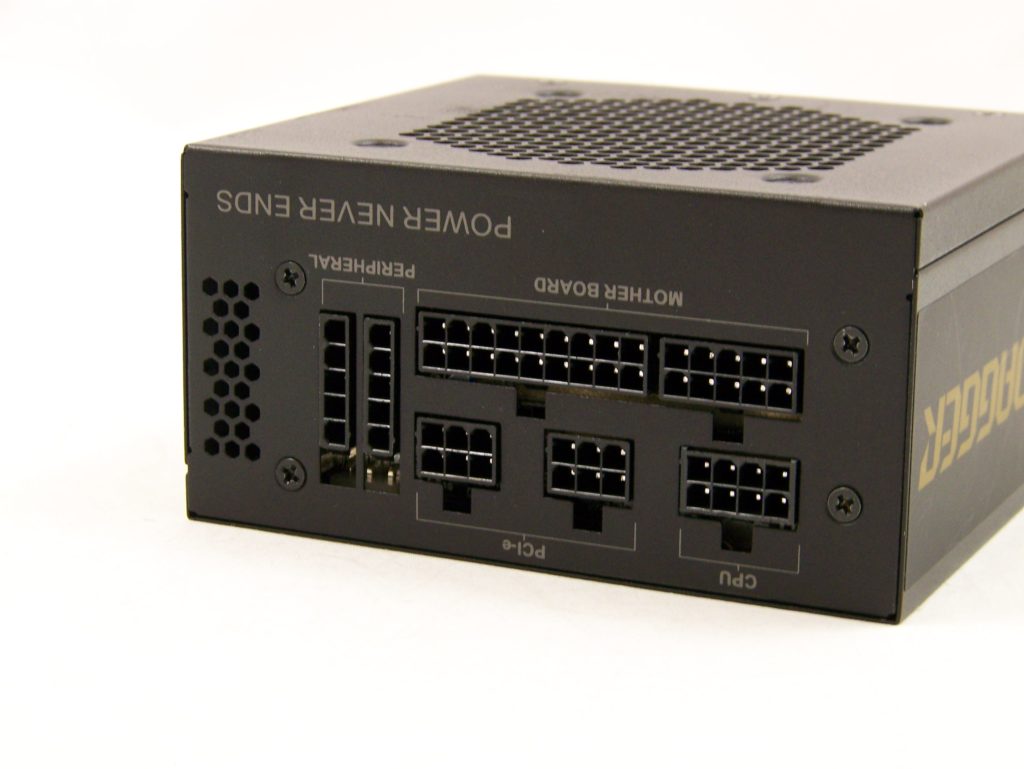
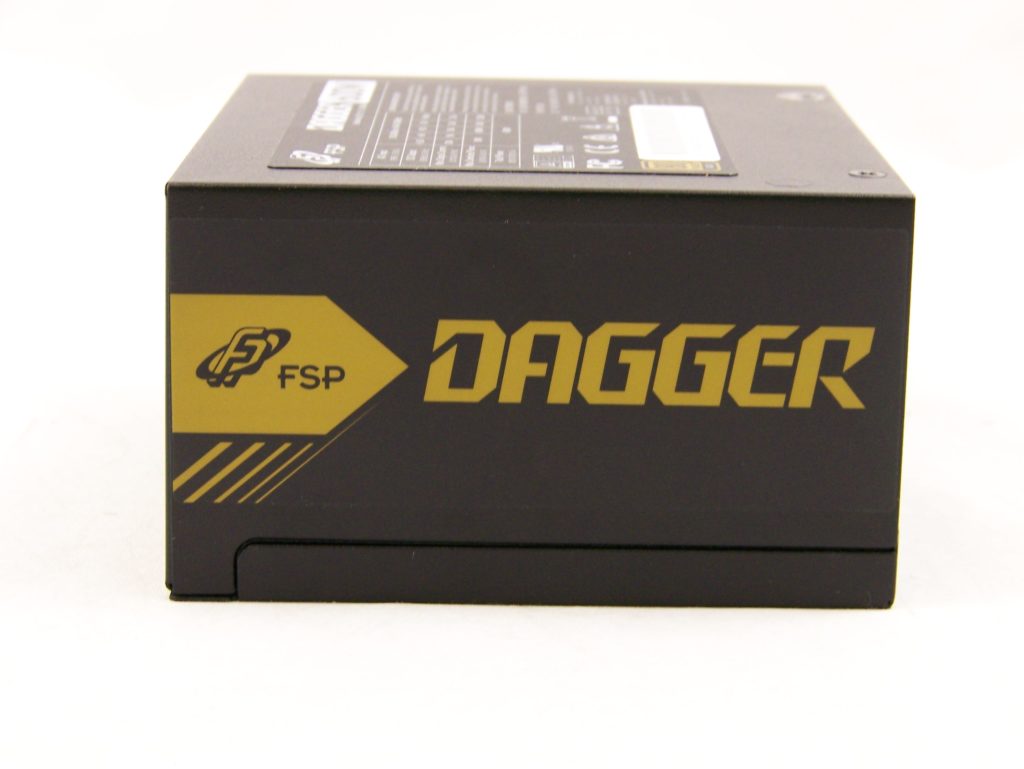

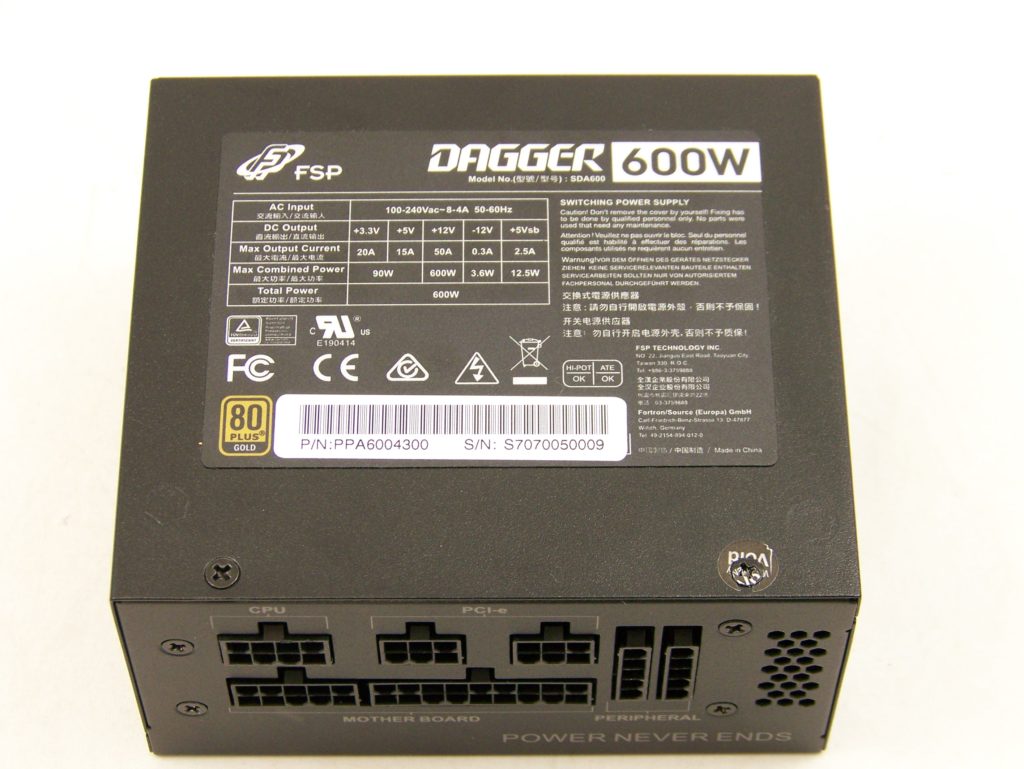
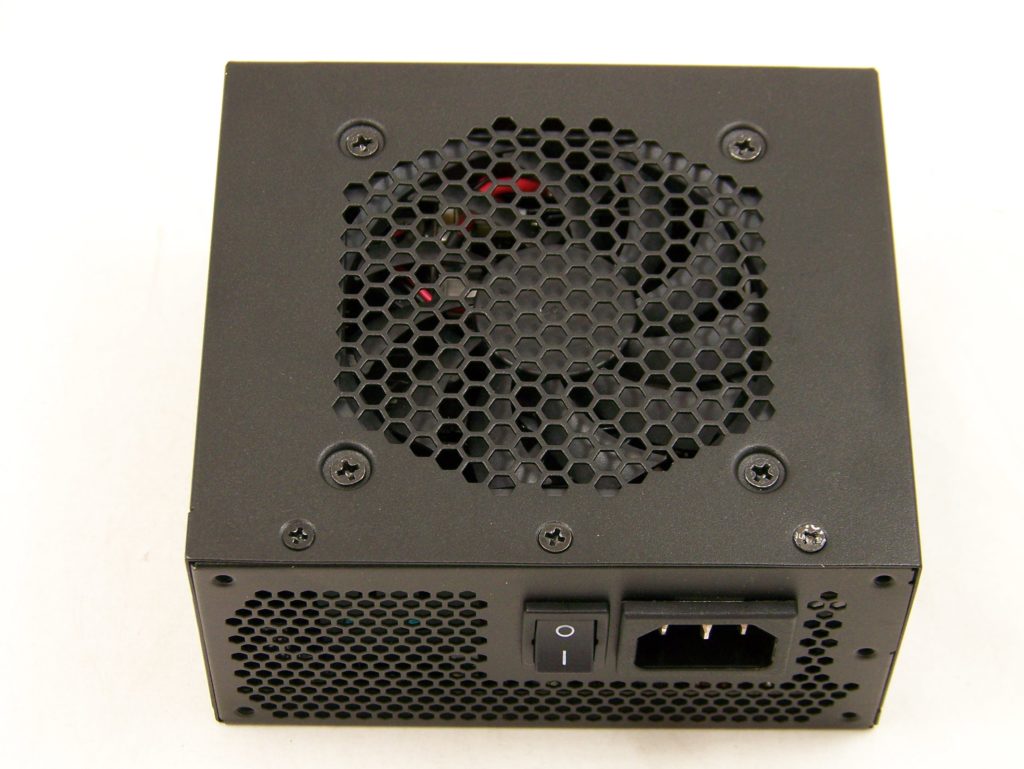
The external build of the FSP Dagger 600W differs from what we see from a lot of power supplies due to its size as an SFX form factor unit. Otherwise, it conforms to much of what has become standard among enthusiast power supplies over the last 10 years or so (the layout is standard for a single overhead fan design with APFC and modular cables). The finish we see today is a slightly textured black, that should be durable, and the unit carries the FSP Dagger branding. The branding is, however, applied via stickers. The modular interface is labeled with a nice printing process unlike the stickers used on the sides of the unit.
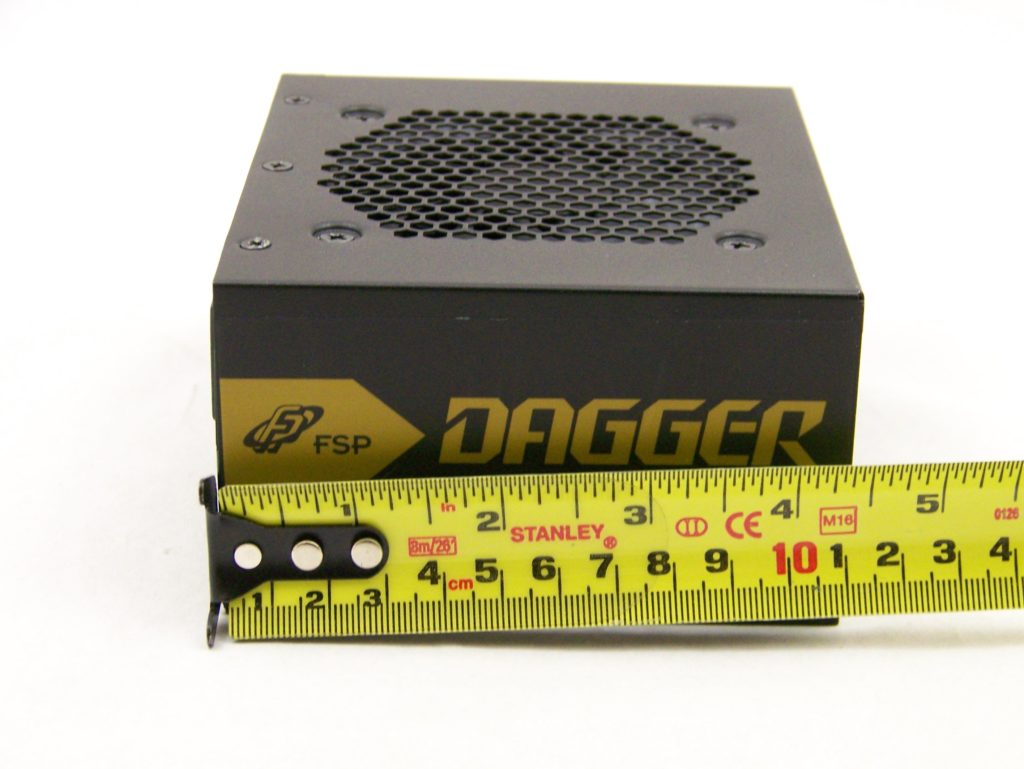
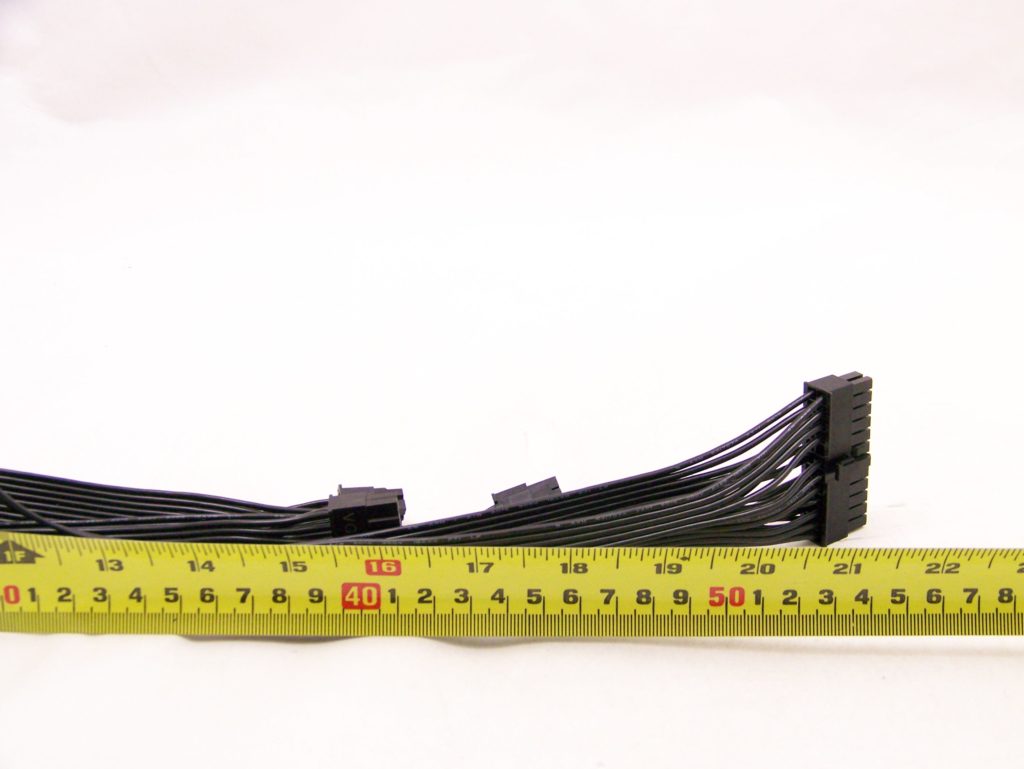
The FSP Dagger 600W comes in at a total length of ~4 3/8 inches while the cables come in at a length of ~16″ to 21″ to the first or only connector. Additionally, the cables are all the FlexForce style cables.
Internal Build Quality
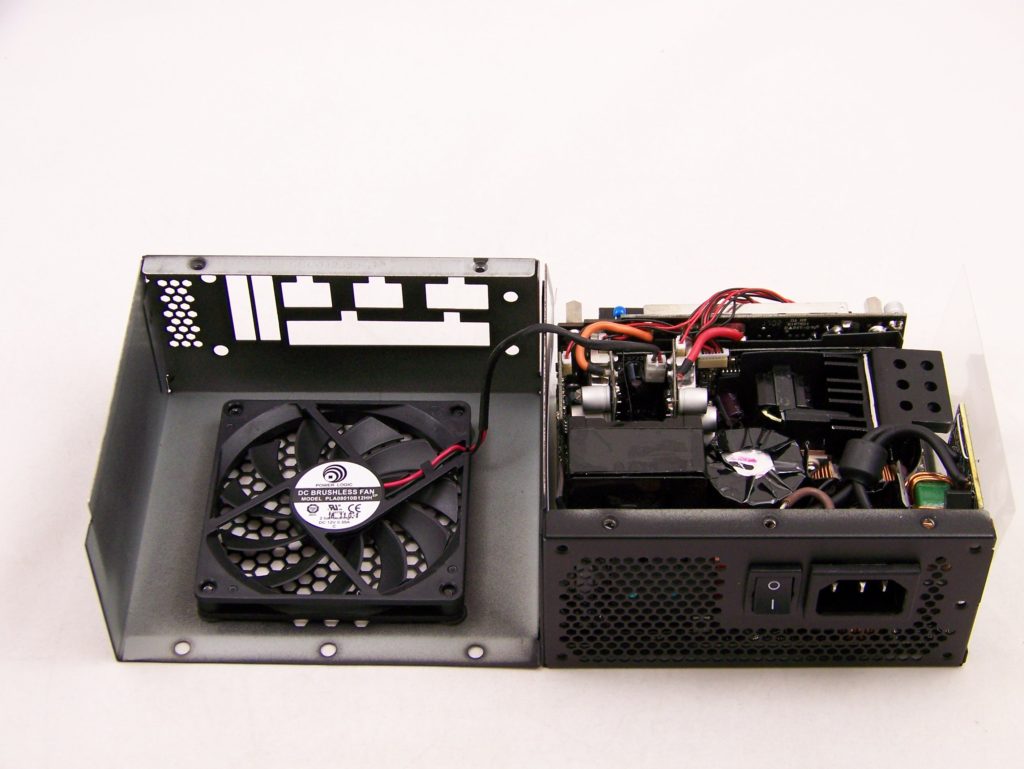
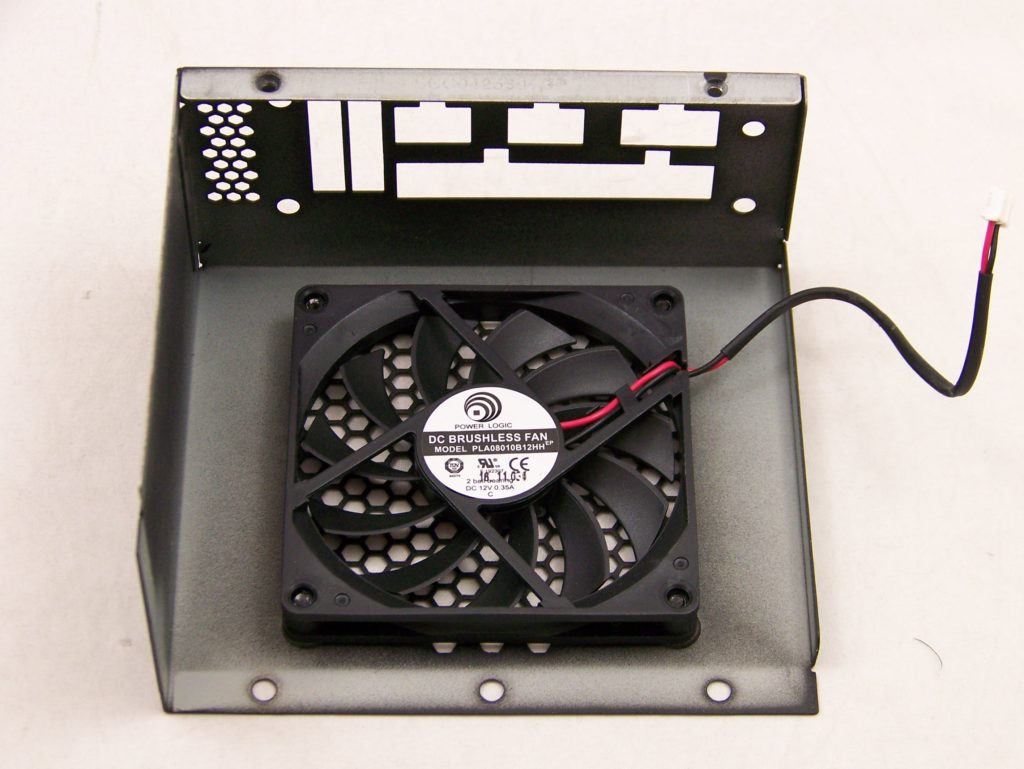

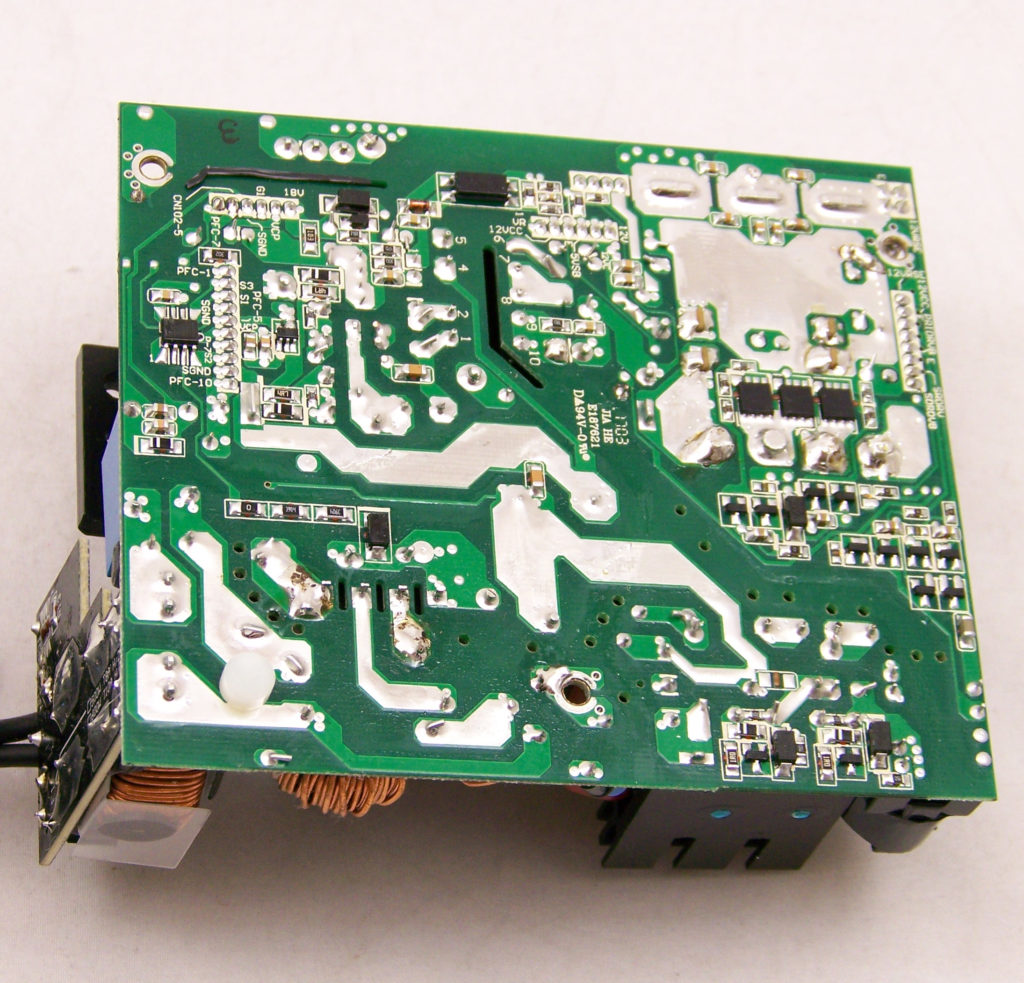
Once we open the top of the FSP Dagger 600W, we see a very compact unit that is unique to models we have seen. The topology is a half bridge resonant LLC primary and a secondary where we have synchronous rectification with DC-DC VRMs for the minor rails. The heatsink layout is very sparse with what appear to be just three small heatsinks installed today. When we look at the back of PCB, we see the 12v MOSFETs here using the housing as an addition heatsink. The soldering here is not terrible but it is also not as well done as it could be.
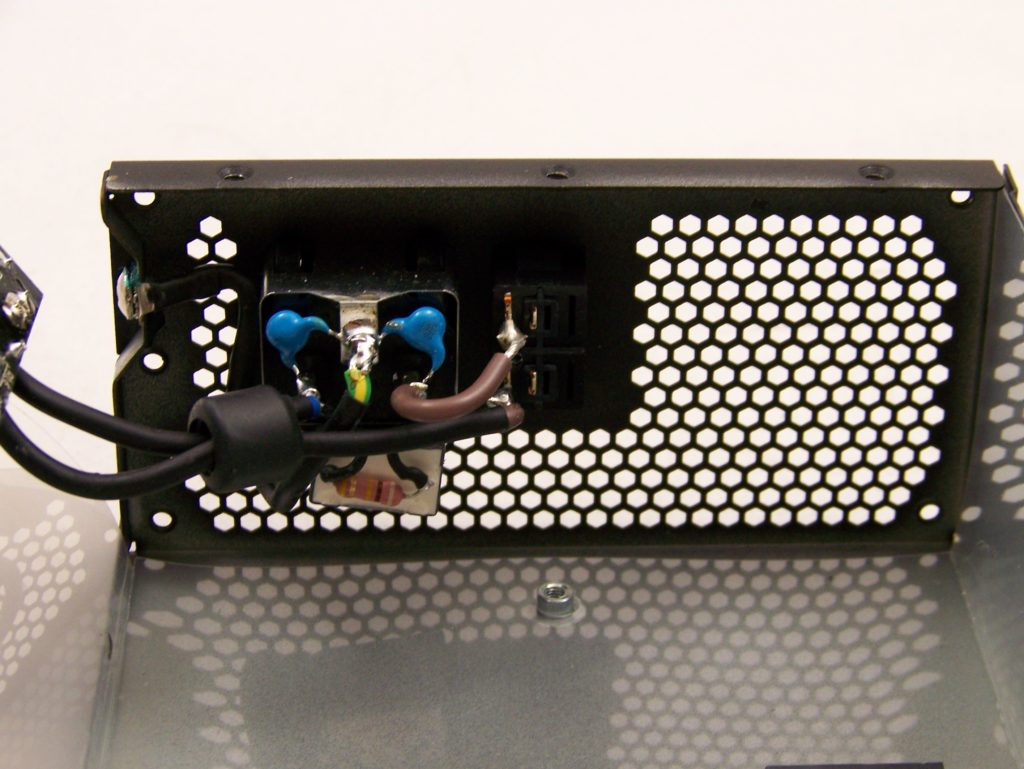

On the primary side, the Dagger 600W input filtering begins up on the housing itself with some X capacitors and Y capacitors and then trails onto the main PCB. There is an interesting substitution here as the MOV is replaced by a diode. The bridge rectifier is next and it is attached to a tiny aluminum heatsink. As we move around to the primary side proper, we find a coil followed by the APFC power components on a heatsink. Next to this heatsink is the APFC controller on a PCB. Also located here, we find the main input capacitor which is provided by Rubycon. This capacitor is rated at 450v 330uF 105C. Lastly, the main switchers are attached to the ridged heatsink located here.
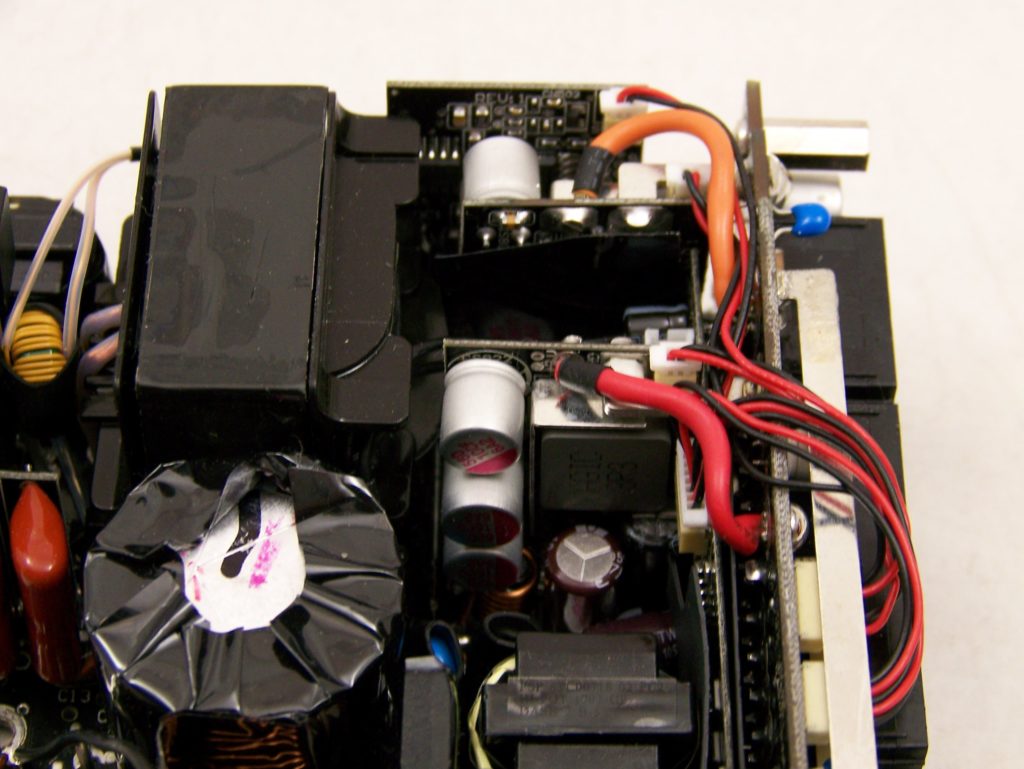
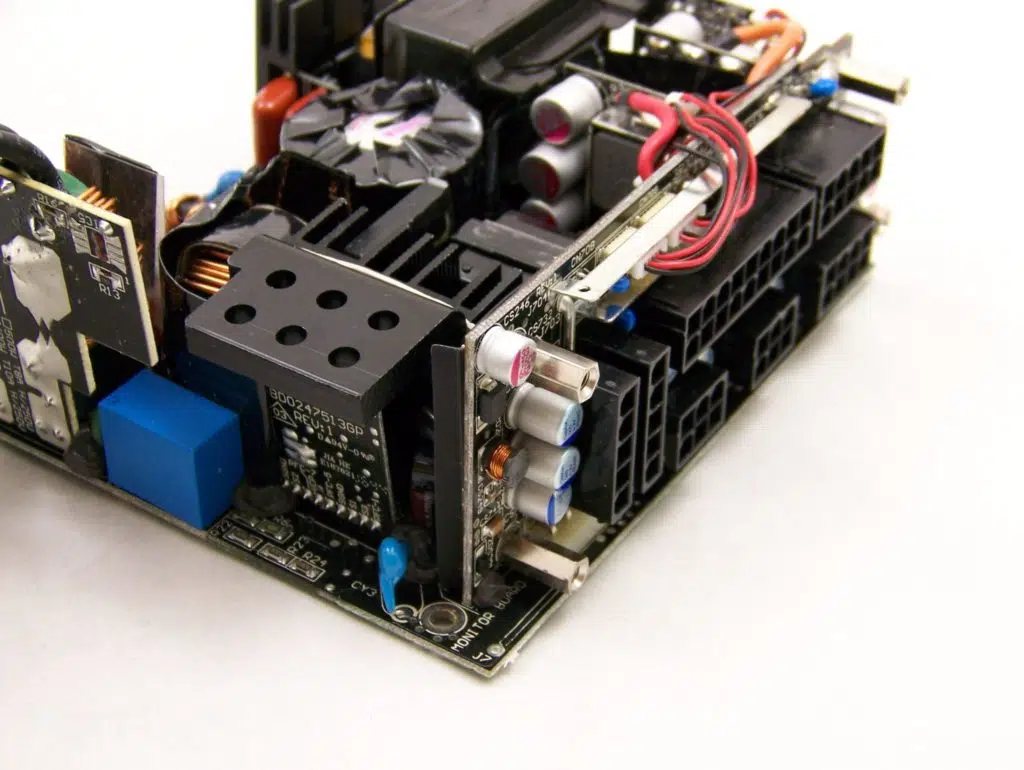
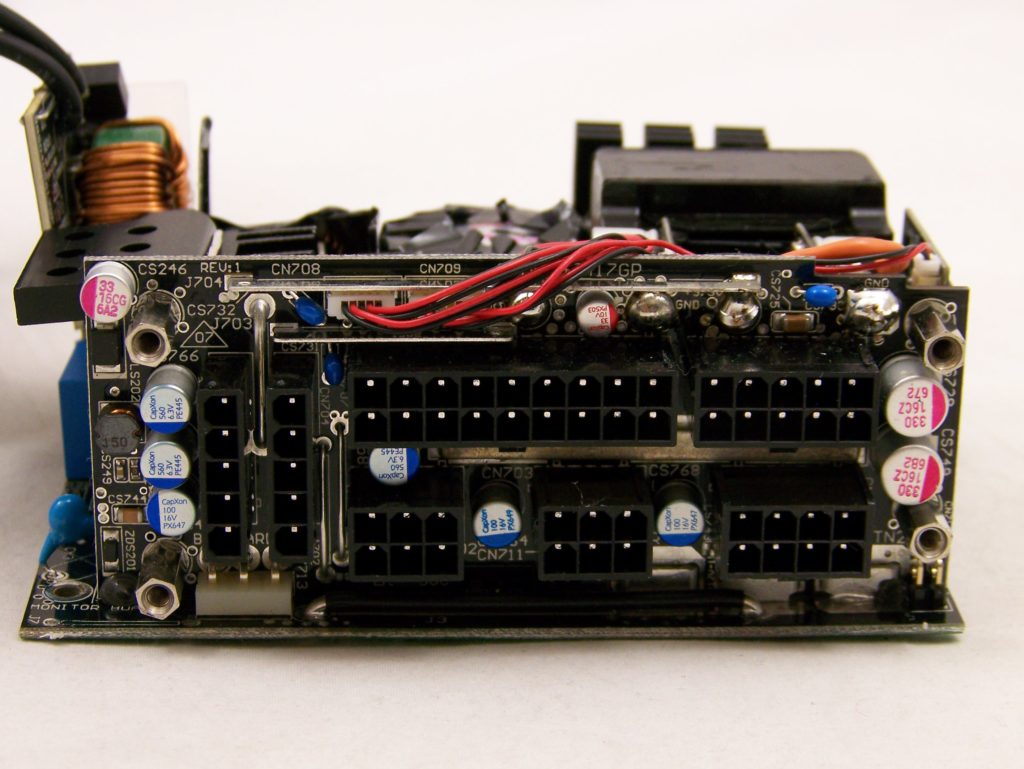
The “secondary side” of this unit continues to be very crowded today. Crammed into this area we find the main transformer, +5VSB circuitry, a PCB housing the protection IC, and of course the DC-DC VRMs. These VRMs are housed on their own PCBs and we see a few solid CapXon capacitors populating these as well. Additionally, there are a few small Nippon Chemi-con capacitors scattered throughout the secondary in various places and roles. Moving on to the modular PCB, we see the modular connectors as well as a number of capacitors provided by CapXon again. The PCB construction looks decent but, like the main PCB, it is not amazing.
Build Quality Summary
Today’s FSP Dagger 600W is the first SFX power supply we have seen here at TheFPSReview and it starts off this formfactor with what looks to be a generally well built example. The exterior of this unit is well built and it looks like most modular overhead fan units these days with its black slightly textured finish. Some of the actual branding approaches are bit lower down the quality scale but, ultimately, this does not affect the unit in a major way. When we move to the interior build quality, we see a modern design that is generally well executed. One area where this unit could use a bit of improvement is the soldering. Otherwise, the integration is very tight because of the small formfactor but it is well done. The component selection is excellent as we see Nippon Chemi-con and Rubycon standard capacitors as well as CapXon solid capacitors today; though the CapXon capacitors are not as nice as the others. This all looks good. So, let’s move on now to the load tests and see how this unit does there!
